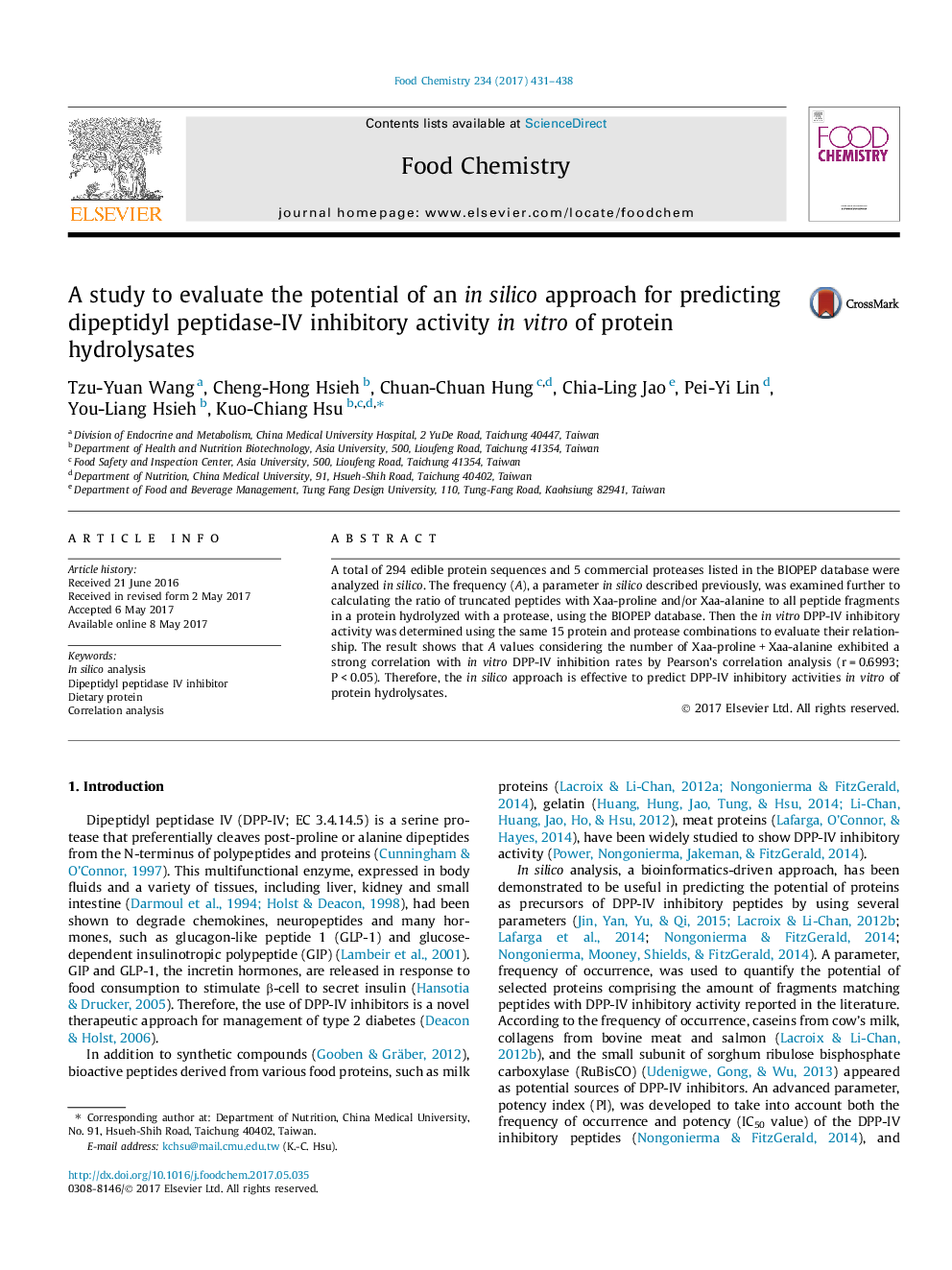| Article ID | Journal | Published Year | Pages | File Type |
|---|---|---|---|---|
| 5133154 | Food Chemistry | 2017 | 8 Pages |
â¢The in silico parameter, frequency (A), was applied as a screening tool.â¢294 proteins and 5 proteases listed in the BIOPEP database were analyzed in silico.â¢Numbers of peptides with Xaa-Pro and Xaa-Ala was the key factor of frequency.â¢Frequency and DPP-IV inhibitory activity in vitro showed a strong correlation.
A total of 294 edible protein sequences and 5 commercial proteases listed in the BIOPEP database were analyzed in silico. The frequency (A), a parameter in silico described previously, was examined further to calculating the ratio of truncated peptides with Xaa-proline and/or Xaa-alanine to all peptide fragments in a protein hydrolyzed with a protease, using the BIOPEP database. Then the in vitro DPP-IV inhibitory activity was determined using the same 15 protein and protease combinations to evaluate their relationship. The result shows that A values considering the number of Xaa-proline + Xaa-alanine exhibited a strong correlation with in vitro DPP-IV inhibition rates by Pearson's correlation analysis (r = 0.6993; P < 0.05). Therefore, the in silico approach is effective to predict DPP-IV inhibitory activities in vitro of protein hydrolysates.
